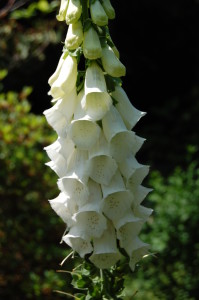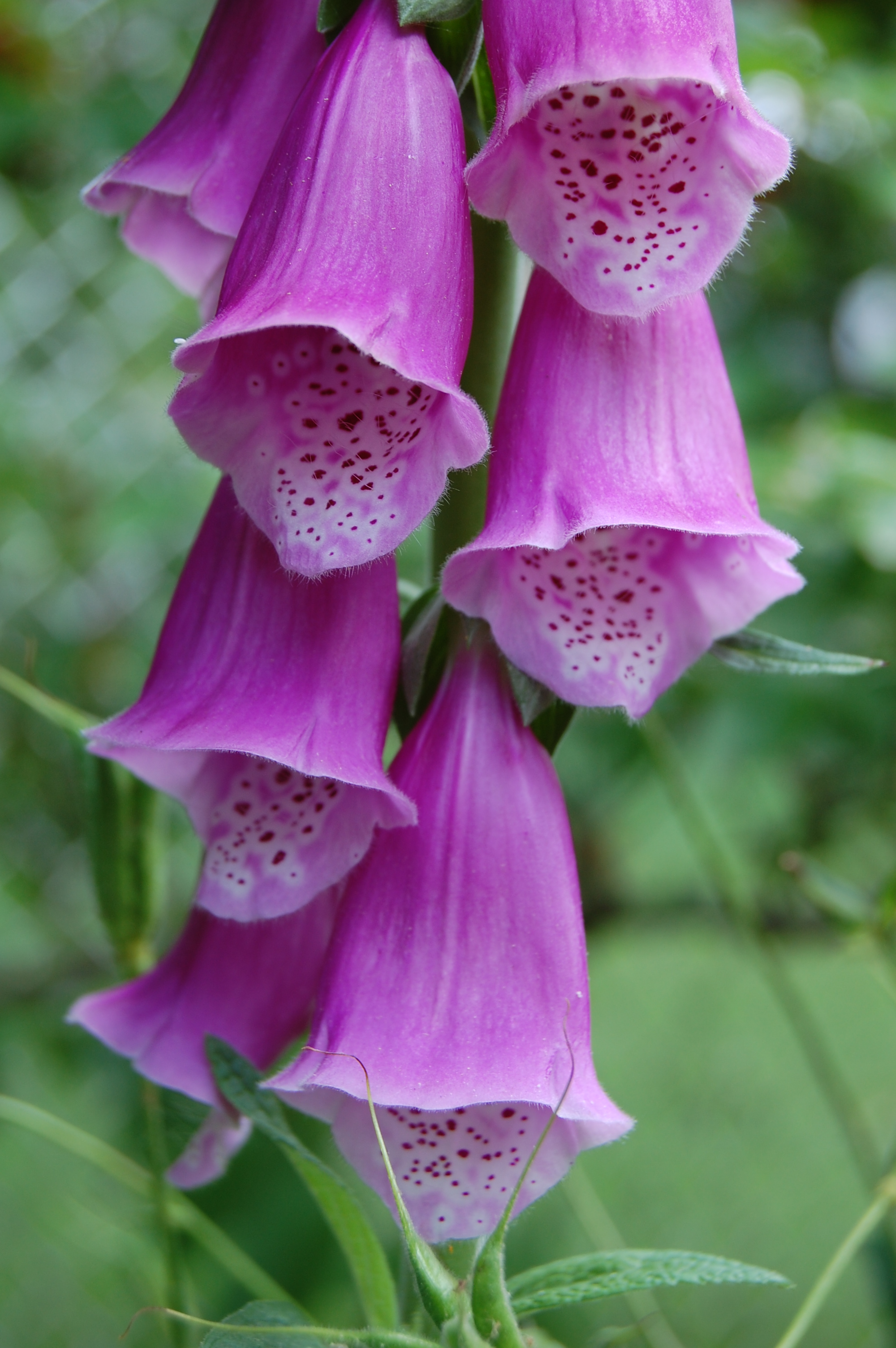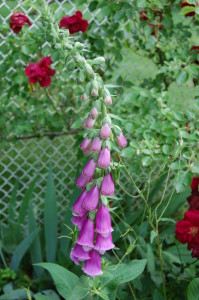Foxglove (Digitalis purpurea) is a medicinal herb that is also a beloved cottage garden flower. How it got the name foxglove is a matter of some dispute. Some say it derives from the Old English foxes glofe / glofa which means Fox’s Gloves. The story is that people believed that foxes used the flowers on their paws to muffle their footsteps as they hunted. It is thought that the reason foxglove became associated with foxes is that the plants grow in the same areas favored by foxes for their dens.
Another story says that the name is actually a corruption of folks’ gloves, a reference to fairies or fairy folk. The belief was that fairies wore the blossoms on their fingers like gloves. The latin name, digitalis, references fingers because the flowers are exactly the right size to fit a finger.
Foxgloves contain digitalin from which digitalis is made. Digitalis has been used to regulate the heartbeat. It is used less often now because it has too many side effects. Digitalin is found in all parts of foxglove plants, seeds and roots so you should always handle it with gloves. Because it affects the heart, exposure to too much can cause heart failure and death. Death most often occurs in children under 6 years old, but adults and young people should still be very careful. This toxicity resulted in the nicknames dead man’s bells and witch’s gloves.
Good news for those of us whose gardens are regularly ravaged by deer. Foxglove is as poisonous for deer as it is for us so deer leave it alone. You should consider planting foxglove in your hummingbird garden. Hummers find the tubular flowers irresistible and not the least bit toxic.

White Foxglove
Foxgloves are native to the woodland edges of Europe and North Africa. They can grow in full sun but prefer semi-shade or shade. The plants prefer rich, well-drained soil. They cannot grow in damp conditions. Foxglove are biennials that are hardy in zones 4 through 8. The first year, a rosette of leaves develops at the base of the plant. The second year, the rosette of leaves grows again and then a stalk with bell shaped flowers appears in late spring or early summer. Depending on the variety, the stalks can be 2’ to 5’ high. The flowers range in color from white through pink to purple. Very often they sport spots on the insides. The flowers open from the bottom of the stalks to the top.
If you prune away the flower stalk before it starts to form seeds, more flower stalks will develop from the sideshoots at the base of the flower stalk. Careful pruning like this may result in the plant living longer than 2 years, in effect becoming a short-lived perennial. Many gardeners think that foxglove are perennials because they are prolific self-sowers. They are so prolific that foxglove is considered invasive in California.
It’s easy to save seed and grow your own foxglove. When the seed pods on the flower stalk turn brown and open, just hold an envelope or other small container under the pods and gently shake the seeds into your receptacle. Store them as you would any other seeds until you are ready to plant them. I store my seeds in my refrigerator.
Growing foxglove from seed is also very easy. You can direct sow it in your garden in the summer, to germinate in the fall, or in the fall or spring to germinate in the spring. Surface sow the seeds. They need light to germinate. The seeds will germinate in 14 to 21 days at 60⁰F to 65⁰F. Seeds can also be started indoors in the early spring. Again, surface sow them so that they are exposed to the light that they need to germinate. Seedlings can be transplanted into your garden after your last frost.
Foxglove isn’t susceptible to many diseases. It is prone to crown rot, so make sure you are growing it in well-drained soil. Leaf spot and powdery mildew can be avoided by providing enough air circulation. It is recommended that you space your plants 1’ to 2’ apart depending on the variety.



One Comment on “Foxglove”
Beautiful article! You are, clearly, a lover of flowers, life, and mythology. Lovely!